FIONA APPLE: I DIDN'T KNOW IT WAS UNRELEASED...
 One of my favorite albums of 1996 was Fiona Apple's Tidal. I'm sure I was drawn in, like millions of other males, by the extremely sexy video for the lead-off single, "Criminal." But the weakness of being influenced by the video made it so much better knowing the rest of the album was worth the listen -- that the sexy girl on the TV screen really could write songs, play piano, and sing. For weeks, the CD didn't even leave my stereo; the best time to listen was late at night with the lights turned off -- I'd call it very sultry alternative jazz-pop.
One of my favorite albums of 1996 was Fiona Apple's Tidal. I'm sure I was drawn in, like millions of other males, by the extremely sexy video for the lead-off single, "Criminal." But the weakness of being influenced by the video made it so much better knowing the rest of the album was worth the listen -- that the sexy girl on the TV screen really could write songs, play piano, and sing. For weeks, the CD didn't even leave my stereo; the best time to listen was late at night with the lights turned off -- I'd call it very sultry alternative jazz-pop.
I eagerly awaited the release of her next album. The initial single, "Fast As You Can," boded well but the rest of the album just didn't have the magic of the debut (it was good, just not THAT good) primarily, I felt, because it wasn't as piano-driven/melodic as Tidal had been. This second release was significant for a reason wholly unrelated to the music contained within -- it sported the longest title of any album I can remember: When The Pawn Hits The Conflicts He Thinks Like A King What He Knows Throws The Blows When He Goes To The Fight And He'll Win The Whole Thing 'Fore He Enters The Ring There's No Body To Batter When Your Mind Is Your Might So When You Go Solo, You Hold Your Own Hand And Remember That Depth Is The Greatest Of Heights And If You Know Where You Stand, Then You Know Where To Land And If You Fall It Won't Matter, Cuz You'll Know That You're Right. Of course, the spine and most sane people just called it by the first three words of the title.
Aside from a couple of soundtrack-only songs (including a great version of The Beatles's "Across The Universe"), Fiona Apple then disappeared from my radar. Aside from finding a couple of bootlegs here and there, I didn't hear anything about a third album until early last year when she appeared in the "upcoming releases" circular in a Columbia House Music Club mailing (yes, I've been a member for over 20 years now). But the promised album never appeared.
Until I stumbled across it last week as a binary newsgroup download. I don't normally download officially-released material except when I'm certain I'll purchase the actual product. I do believe in putting money in the pockets of those artists I enjoy. So, I downloaded Extraordinary Machine (it was labeled as an advanced copy so that explained why I didn't see it on Amazon.com). But, aside from checking a couple of tracks for sound quality, I hadn't yet listened to the entire album.
A few minutes ago, I stumbled across an article (while searching for concert reviews of Wilco's recent Albuquerque gig) that was headlined, "The Fiona Apple Fiasco," dated April 19. Apparently, the album was finished in May 2003 but the record company fat-cats rejected it for being uncommercial. When Fiona couldn't deliver what they considered a "hit single," the album was mothballed.
Miss Apple, like so many other artists, apparently has some extremely devoted fans. One started a website, FreeFiona.com, which is dedicated to urging the record company to officially release the album. What I downloaded is actually unreleased -- the eleven tracks were "mysteriously" leaked to the Internet over the past several months. I'm listening to it right now and the first six songs sound really good -- at least the equivalent of the majority of her second album.
The full article, from the Washington Post's Slate Magazine, follows:
The Fiona Apple FiascoListen to "Oh Well" from Fiona Apple's Extraordinary Machine:
The executives at Epic won't release her new album, but they may be right not to.
By Martin Edlund
Posted Tuesday, April 19, 2005, at 3:39 AM PT
Fiona Apple's third album, Extraordinary Machine, looked like it was headed for the pop scrapheap. Completed in May of 2003, it was rejected by her label, Epic Records, on the grounds that the songs weren't sufficiently commercial to justify the expense of their release. After Apple failed in her attempt to write a more salable single, the album was mothballed—destined to be mythologized by devoted fans but otherwise forgotten and unmissed.
But a funny thing happened on the way to oblivion. Last year, two songs from Extraordinary Machine were mysteriously leaked onto the Internet. Then the leak became a flood. In January of this year, a Seattle radio DJ named Andrew Harms began playing the other album tracks, which were quickly bootlegged and uploaded to the Web. Harms won't divulge the source of the songs, leading some to speculate that the leak was due to (extraordinary) machinations by Epic. Harms denies this.
Also in January, a 21-year-old Apple fanatic named Dave Muscato mounted a campaign through the Web site FreeFiona.com urging Epic to release the album. He and his cohort collected signatures, mailed foam apples to Sony-BMG headquarters (Epic's parent company), picketed outside the building, and raised money online to fund their effort. The campaign continues, despite the fact that all 11 album tracks (and several alternate versions) have been widely available on the Internet since mid-March. The album has essentially been released: The only thing missing is the $15.99 price tag.
Epic, meanwhile, has had little to say on the subject. It hasn't responded to the Free Fiona campaign and refuses interview requests. In February, the label issued the elliptical statement: ''It's our understanding that Fiona is still in the midst of recording her next album and we at Epic Records join music lovers everywhere in eagerly anticipating her next release.'' On Epic's behalf, the Recording Industry Association of America has begun cracking down on Web sites offering the songs for download.
Much of the abundant press and blog coverage has attempted to shoehorn this Cinderella story into another glass slipper: that of Wilco's Yankee Hotel Foxtrot. The similarities are striking. Wilco's album was likewise rejected by its label, Reprise/Warner, and the band was dropped. After buying back its masters, Wilco streamed the album online, where it was embraced by fans and critics alike. Yankee Hotel Foxtrot was ultimately released, to much acclaim, by the boutique label Nonesuch Records (ironically, another Warner imprint) in 2002.
But Yankee Hotel Foxtrot isn't a useful precedent. For one thing, it was a much bigger cause célèbre than Extraordinary Machine is shaping up to be. Fiona hasn't been dropped by her label, and she hasn't even stated publicly whether she cares if the album is released or not. Wilco's standard for success is also much different than Apple's and Epic's. Despite universal plaudits, endless rehashings of the David-versus-Goliath story, and a feature film about the album, Yankee Hotel Foxtrot has sold only 517,000 copies to date. That's a big number for Wilco, but for an artist with Apple's track record—1997's Tidal sold 2.7 million copies and 1999's When the Pawn ... sold 917,000—it would be a major disappointment.
Which brings us to the question: Just how well would Extraordinary Machine sell? It's easy to get the impression the public is clamoring for it. On March 18, Wired News ("Fiona Apple Is Cookin' on the Net") reported that "at any one time about 38,000 users in the United States are downloading songs from Extraordinary Machine." This is an astonishing number, and one that has been widely parroted. It would translate to hundreds of thousands, if not millions, of downloads a day—a groundswell of interest any label would be foolish to ignore.
If only it were real. Wired News' source for the number was BigChampagne, an online media measurement company that serves as a kind of Billboard chart for the surreptitious world of file sharing. But according to BigChampagne CEO Eric Garland, the figure actually refers to the number of people in the United States who were "sharing" the songs on the major P2P networks at one time—that is, making at least one track from the album available for download—not the number actively uploading or downloading the songs.
This is a far humbler figure, especially when compared with equivalent numbers for successful major-label releases. As of April 7, 3,994,837 people were sharing songs from Hot Fuss by the Killers; 5,179,675 people were sharing songs from Green Day's album American Idiot; and 8,024,713 people were sharing songs from 50 Cent's The Massacre.
Obviously, this isn't an apples-to-apples comparison. These other albums have all benefited from lavish promotional campaigns and extensive airplay on MTV and commercial radio. But the degree of the interest in Extraordinary Machine is even modest when compared to last year's big Internet phenomenon, The Grey Album by Danger Mouse (also unreleased and circulated exclusively on the Web). Whereas 278,327 people were sharing material from The Grey Album at its peak in April 2004, Extraordinary Machine topped out at 46,759 in March—less than one-fifth that number.
These numbers aren't comprehensive, but they do give a sense of the relative interest in Apple's album. "Given that Fiona Apple is a veteran who has released two previous albums, I think the online audience looks like her core, not like a popular audience," says Garland, who regularly advises radio stations and record labels about file-sharing trends.
It isn't difficult to see why. Extraordinary Machine is a wonderfully complex album. By turns whimsical and solemn, it's full of topsy-turvy cabaret tunes, banging piano parts, and smart, sometimes clunky lyrics. The producer, Jon Brion, ornaments the songs with quirky, cinematic arrangements reminiscent of his soundtrack work on I Heart Huckabees and Punch-Drunk Love. In other words, Extraordinary Machine is just the sort of adventurous, critic-pleasing album that's nearly impossible to sell to a mainstream audience.
One song, "Please, Please, Please," even seems to anticipate Apple's troubles at Epic. She sings: "please, please, please, no more melodies/ they lack impact, they're petty/ they've been made up already ... / but me and everybody is on the sad, same team/ and you can hear our sad brains screaming/ give us something familiar, something similar/ to what we know already, that will keep us steady."
You can just imagine how it must have sounded to Epic back in 2003. This was when the young, husky-voiced, piano-playing beauty Norah Jones was riding high on five Grammy Award wins and more than 5 million album sales. And, at the same time, Epic's own young, husky-voiced, piano-playing beauty was remaking herself in the image of a midcareer Tom Waits. The decision to shelve the album must have seemed obvious.
Yet, it looks like the scrappy Free Fiona campaign and the skewed coverage of the leak may be swaying minds at Epic. The label's most recent statement, issued earlier this month, read: "Epic is continuing to work with Fiona's management toward the release of this project." This could be a costly mistake: Based on the evidence, there's no reason the label should second-guess itself.
Martin Edlund is a writer in New York.

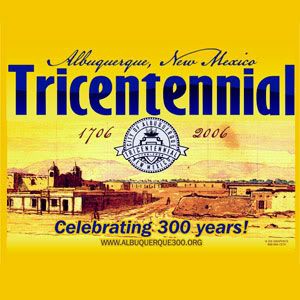




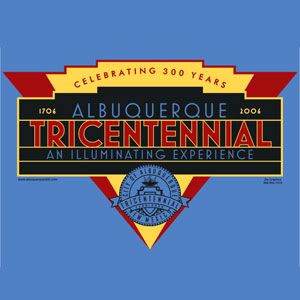

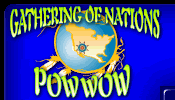
 "We saw men, women and children of all ages at the joyful labor which was to crown with rich abundance their future harvests and ensure them plenty for the ensuing year," Pike recalled afterward.
"We saw men, women and children of all ages at the joyful labor which was to crown with rich abundance their future harvests and ensure them plenty for the ensuing year," Pike recalled afterward.


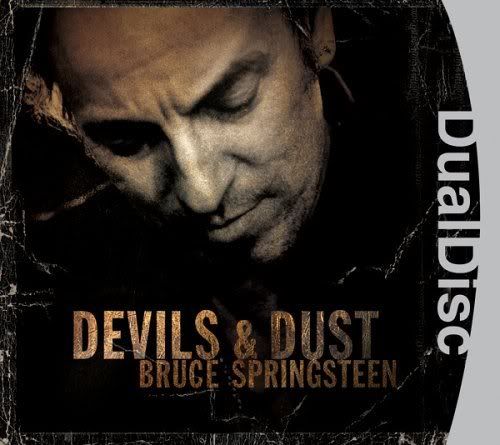


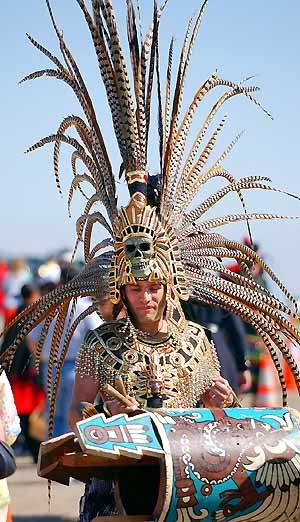
 "Beautiful Day" featured a short tease of "In God's Country" from The Joshua Tree. The songs from the new album also sounded great -- I knew that "Sometimes You Can't Make It On Your Own" would be a live classic from the first time I heard it last November; "Love And Peace Or Else" is a powerful song which led right into the one-two punch of "Sunday Bloody Sunday" and "Bullet The Blue Sky" (which included part of "The Hands That Built America" at the end before leading into "Running To Stand Still" and "Bad").
"Beautiful Day" featured a short tease of "In God's Country" from The Joshua Tree. The songs from the new album also sounded great -- I knew that "Sometimes You Can't Make It On Your Own" would be a live classic from the first time I heard it last November; "Love And Peace Or Else" is a powerful song which led right into the one-two punch of "Sunday Bloody Sunday" and "Bullet The Blue Sky" (which included part of "The Hands That Built America" at the end before leading into "Running To Stand Still" and "Bad").
 The
The 










